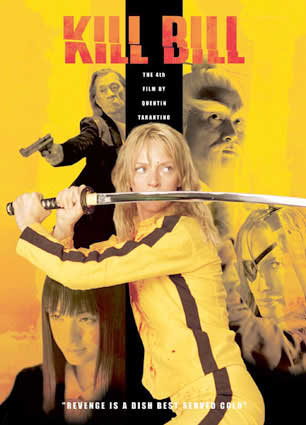

As director Quentin Tarantino has indicated in a recent interview with Newsweek, his latest film “Kill Bill Vol. 1” (2003) substantially represents a “greatest hits” montage of scenes inspired by his favorite Asian action films. On its own merits, “Kill Bill” matters to the appreciation of Asian action film for several reasons. It is arguably Hollywood’s first explicit attempt to emulate and improve on the specific narrative themes and action conventions of Asian cinema while maintaining an Asian cultural frame. The casting, central narrative, martial arts choreography and score elements foreground Asian performers, while key elements of costume, set and mise-en-scene are explicitly grounded in specific Asian action film classics. The resulting encounter between Tarantino’s previous innovations within the genre of Hollywood narrative cinema and his visualization of a fully evolved Asian action spectacle is likely to set a benchmark for Western audiences.

Whether “Kill Bill” successfully amplifies and builds upon Asian action cinema or appropriates and undermines it depends on how the film is read. If the performers and culturally specific genre conventions of Asian films can be appropriated, turned into commodities and magnified in exaggerated parody, as postmodern cultural analysis suggests, their emotional resonance and subtle messages risk being swept up in a haphazard, generic co-mingling. If Asian action film is reduced to empty spectacle that, of necessity, moves beyond reality into the fantastic, genuine grounding in important human emotion and experience is forfeited. The power of pain in Asian action cinema has always been that it has seemed potentially as real as the physical skills of the performers. Suffering and primary emotion cannot be divorced from their intimate, human sources. Flawless, invulnerable heroics or impersonal mass devastation may invite triumphalist identification, but this has never been the locus of Asian cinema’s heart. It is, however, closely aligned with Hollywood action genres. This brief essay attempts to explore whether “Kill Bill” has, in fact, promoted and honored Asian action cinema, or has assumed its appearance but missed its essence.
All written material copyrights
by T. P. (2003)